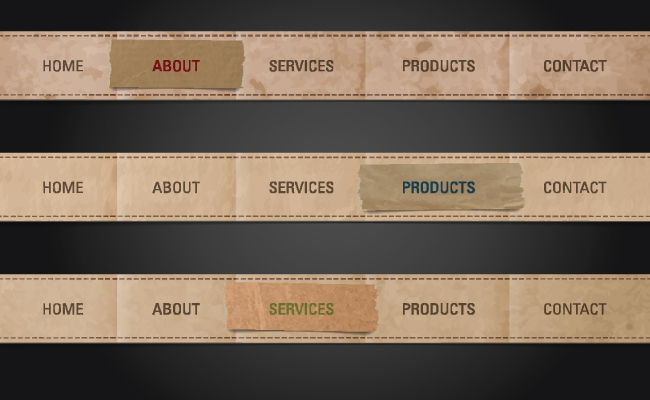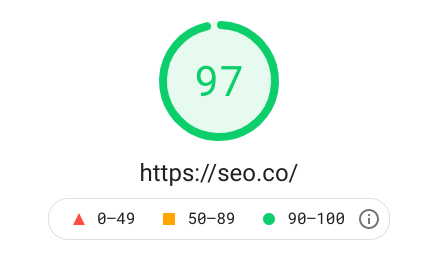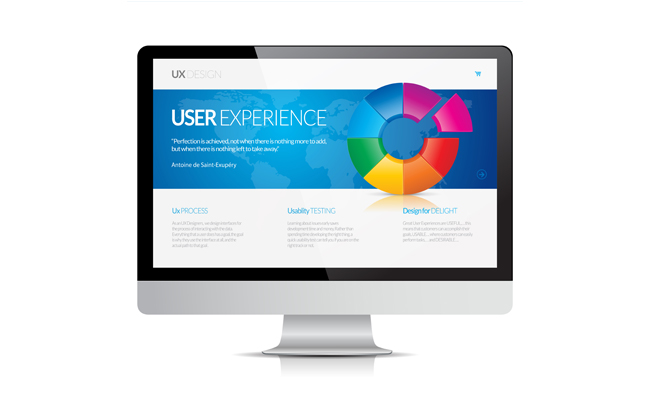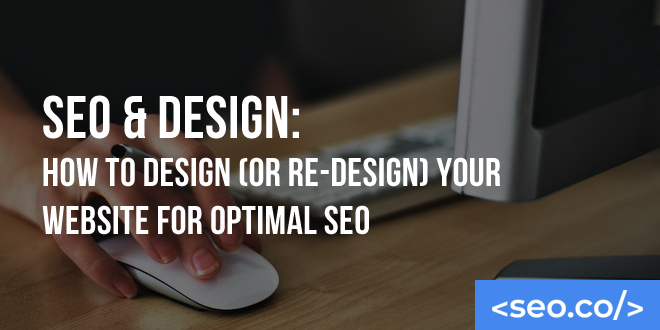User experience is one of the most important aspects of any online business or online marketing strategy.
Strictly defined, UX is the sum total of a user’s impressions, feelings, and thoughts as he or she navigates your platform.
Making a user happy, giving him or her easy, convenient directions, and eliciting feelings of comfort and familiarity are quintessential to a positive UX.
It’s an exciting opportunity for the entrepreneur enthusiastic about the future of the brand. It’s a new challenge and another project for the design and development team. But for the search marketer trying to maintain and build on their site’s current level of success, the whole process can be a nightmare. Pulling one version of your website down and putting another one up is like swiftly pulling a tablecloth out from under a set table without breaking or moving anything; it’s next to impossible unless you know what you’re doing.
Table of Contents
Optimizing Website Design for SEO
During the process of your SEO web design, you’ll want to pay careful attention to the design factors that can impact your search rankings.
It’s not that you need to know about the technical details of html if you’re not a programmer. But you need to understand how search engine optimization (SEO) and design work to effect maximum search engine exposure.
Most search engine optimization is based on keyword-optimized content. However, factors such as file naming, image tagging, use of coding, and ensuring that your website loads quickly also contribute to search rankings.
Most of what is included here, however, is related to improving technical SEO and not directly related to design
Keyword-optimized file names
The search engines use several factors and sources to assess what a website’s content is all about. These include file and directory names.
Your site will get a much better ranking when all the elements, including file name, are keyword optimized. Assigning a keyword-based name to a file increases your chances of getting indexed properly without being penalized for re-using keywords.
Making the Most of Images
Keyword-optimizing images and videos on webpages is one of the most neglected tricks of skilled search engine optimization.
Search spiders or robots are actually unable to determine what images or videos are all about, unless they are accompanied by a descriptive text and coding elements. This is where Alt tags come in very handy.
Alt tags tell the search engines what’s in the images. When you assign Alt tags to graphics and videos, be sure to use keywords, so they show properly on search results. This elevates a site’s keyword association and pushes its relevancy to targeted keywords upward in search engine rankings.
Images should add value. Charts, graphs and stats do this well. Stock images do not.
Internal linking structure
Including a sitemap makes it easier for search engine spiders to find their way around your existing site when they’re looking for something new to index.
It’s particularly helpful for search spiders to determine what your existing site is being optimized for if you use keywords in navigation links.
Coding to highlight keywords
Headers and titles can also place emphasis on specific keywords. When you create titles or headers around content, try to keep them short.
Avoid using very long titles and headers with repeated keywords, or your site could be flagged for keyword stuffing. The use of headers also helps search engines identify important sections of a website.
Navigation
The navigation is a critical component of your website because it directs your users where to go; if your users aren’t sure what to do when they get to your site, they’re going to bounce. As a result, many designers choose to make a visually impressive and intuitive site navigation in the header of the site. This is great, but you’ll also need to ensure that your navigation is SEO-friendly. Otherwise, Google won’t be able to tell that your site has intuitive navigation, and any benefit for your users’ intuitions could be compromised by restricted web traffic from a lower search rank to a higher search ranking in search engine results.

In order to make your navigation clear, you’ll need scannable text and clickable links corresponding to each page and section of your website. Even if your navigation depends on images and visual elements for a better user experience, it still needs to be grounded in a crawlable format.
You’ll also want to make sure to include a clear sitemap for search bots to crawl and understand your site. There are several types of sitemaps you can include for your site, including an HTML sitemap found directly on your site and an XML sitemap submitted directly for Google through Search Console (though this is not an explicit design change). Redundancy is not an issue; just make sure your sitemaps are visible and accurate.
Page Offerings
Some modern designs emphasize minimalism, which is valuable for a UX—rather than getting bogged down by countless pages and potential destinations, users are simply presented with what they need. However, from an search engine optimization (SEO) perspective, you’ll want to have at least a solid foundation of page offerings related to your core products and services. Otherwise, you’ll have little hope of ranking for keywords specific to those offerings, let alone getting more clicks.

For example, if you offer three types of consulting services but you’ve consolidated your site to one streamlined homepage, you’ll miss out on the opportunity to highlight each of those consulting services in a separate, crawlable format. You don’t need to go crazy, but make sure you have a solid representation for all the major facets of your business.
Site Speed
Site speed is another important ranking factor that can be easily controlled during the design process. The faster a site is, the better experience a user will have, and the more Google will reward you, so do everything you can to keep your site running efficiently and quickly.

There are many ways you can do this, and any combination of them will help reduce your page loading times. You can remove any pieces of unwanted, unused, or no longer necessary code on the back end of the site. You can reduce the amount of JavaScript in the code, which can be painfully slow depending on how you’re using it. Most importantly, you can reduce the number of videos and images throughout the site and reduce the file size of those that remain.
Responsiveness
Your site needs to be optimized for mobile. At this stage of search engine optimization (SEO) and mobile development, that is a necessity. There are a handful of different methods you can use to make it mobile responsive, which you can address in your redesign if you haven’t already. These options include simply building out a separate mobile site, or converting your desktop site to a mobile version and setting up an automated means of toggling between the two based on the device accessing it.
However, the easiest and most efficient way to optimize your site for mobile is to make it responsive. With a responsive SEO web design, your website layout will automatically flex and stack to accommodate any size screen that attempts to access it. It’s a one-time fix that makes your site perfectly compatible with any device or browser.
Social Elements
Social integration isn’t going to directly increase your rank on SERPs, but it will go a long way to tie your online presence together. Include social icons on your homepage and contact page, and if you can, include sharing functionality that allows users to share your content on their social profiles in as few clicks as possible. This will increase the likelihood of people following you, increase your social visibility through more social shares, and help keep your social and website presences in sync. A stronger social presence will lead to higher domain authority, so don’t miss the opportunity to grow it.

Written Content
As part of the growing trend of minimalism in search engine optimization web design, some designers avoid including written content in favor of more images and more white space. Both these visual elements are important to draw users’ eyes and keep their attention, but without written content, Google or other search engines will see your site as virtually empty. Even if you want to keep your content as concise as possible, be sure to include enough crawlable content to let Google or search engines know what your company is and what you can offer people.
Google Webfonts
Talented designers are very picky about the fonts they include on a website—and some will argue in favor of the most beautiful fonts available. Unfortunately, Google has an easier time reading some fonts over others, and the prettiest fonts around may not be as crawlable as the more basic choices. If you’re concerned about your font’s compatibility with Google search bots, or if you’re looking for one to start with, Google has a helpful list of available fonts.
A Note on 301 Redirects
If you’re redesigning your site, odds are you’re going to have a new site structure, complete with new pages and new URLs. When you go to make the switch, Google will notice new pages coming up and old pages coming down, and that might have a major impact on your search rankings. While it’s not necessarily an element of SEO web design, it’s critically important to set up 301 redirects for your old URLs if you want to avoid potential ranking drops. If you aren’t familiar with 301 redirects, Google has a helpful how-to here.
SEO UX Design Considerations & Mistakes
When it comes to re-designing your website, you’re going to see a bit of volatility no matter what, but you can mitigate the effects by watching out for these three common vulnerabilities:
URL structures
The biggest problem you’re likely going to face as you update your website is a disconnection between your old URL structure and your new URL structure. In a perfect world, you would maintain an identical URL structure, thereby preventing the possibility of a discrepancy, but then you probably wouldn’t need to be updating your site in the first place.

There’s one critical danger here, which can have a rippling effect that permanently damages your domain authority and crashes your ranks. Your URLs have history with Google or other search engines, and Google likes links with history. Its search engines algorithm has come to expect your site to be in a very specific structure and a very specific order, and when it goes to crawl your new site, if it doesn’t see what it expects to see, it triggers a red flag. Historical links, with lots of credibility, that suddenly disappear in favor of entirely new links can wreak havoc on your domain authority, putting you in the same position as a site for a brand that just launched.
The problem is compounded by external links. Naturally, you’ve built a number of links on external sites pointing to various internal pages of your domain in an effort to improve your authority. If any of those links become no longer relevant, the page ranks those links pass will become useless, and you’ll have a profile full of dead links pointing to nowhere, further damaging your domain authority and possibly interfering with your inbound traffic.
Fortunately, there is a simple—but admittedly painstaking—strategy you can use to ensure this outcome doesn’t occur. First, you’ll need to set up a Webmaster Tools account and crawl your site or use an alternative tool to generate a list of all the URLs found on your current website structure—and don’t forget about all your subdomains! Then, if you can, do everything you can to keep that link structure as similar as possible.
For any old links that do not have an immediate counterpart in the new site, or for backlinks whose names have changed, you’ll want to set up 301 redirects. Fortunately, setting up 301 redirects is easy, and once they’re in place, any traffic that would encounter your old URL will be automatically pointed to the new one. This should prevent any damaging crawl errors from Google, and will definitely keep all your inbound external link building accurate and functional.
Select a CMS
Unless you’re working for a very small business, your new website is going to be in the hands of many individuals from many teams and many different departments. Everybody is going to have their own perspectives on what would be best with the site. Multiple opinions, collaborating together can ultimately culminate in the greatest final product, but you can’t forget about Google’s perspective.
Graphic designers want to make the most visually appealing site possible, but there are some design principles that need to be balanced in order to fit with Google’s or other search engines priorities and prevent a nosedive in your ranks. For example, most designers would prefer a site designed with minimalism, with only a handful of links in the navigation and as little onsite content as possible. However, Google likes to see lots of high-quality pages, and without ample onsite content, the search engines may find it difficult to understand your purpose. There is always room for a compromise, so work with your designers to find a good balance that works for both of your goals.
Similarly, other members of your team may have strong preferences when it comes to selecting a CMS, either due to price or personal opinions. There are hundreds of CMS options out there, with varying compatibilities and functionality with search engine optimization (SEO). Be sure to do your SEO research and vet your options when considering a transition.
Aesthetics in Design
First is a core misconception about UX design, and it has to do with that pesky word “design.” When people think about design, especially when it comes to SEO web design, they think of aesthetic choices like coloration, layout, structure, and so on. While these are all important to user experience, UX design and SEO web design are not intrinsically the same. Web design can have all kinds of motivations—for example, you could make the most beautiful site possible, or make a site that only cares about funneling people to conversion. A successfully designed site from a UX perspective might be beautiful and have elements of conversion optimization, but its primary focus is always the user’s interaction.
Plus, most UX design includes more than just the “aesthetic” part of design. There’s also site mapping, branding, navigation, and similar subjects to consider.
Keep in mind, however, that what may work for most users, may also kill your website’s accessibility for disabled users for ADA compliance.
Sometimes Good Design is Irrational

This is a hard concept to accept, because we’d like to imagine that the world always behaves rationally. Because user experience depends on the instincts, intuitions, first impressions, and emotions of the individual user (none of which are standardly predictable), some of the best UX design choices are inherently irrational.
Let me illustrate with a simple example. Imagine a navigation bar with a horizontal layout. It might make sense that your user’s eye is drawn to the leftmost item first, as most American users read from left to right. But you might discover in testing that the middle item is usually the first seen and first clicked. Depending on your priorities, this could demand a redesign. In UX, you can’t trust your instincts—you can only trust the tests.
Good UX is Tough
On the surface, UX seems like it would be a fun, relatively easy experience. It might seem like designing an amusement park, adding new features that look fun and experimenting with different combinations until you find the perfect layout. But the reality is, UX is a hard, tedious, and arduous process. As we saw in my previous point, your instincts and beliefs are constantly called into question by real data, and in many cases, you’ll end up with a product you don’t subjectively “like” because it happens to work best.
The unpredictability of users makes the process even more difficult. You might find that a portion of your audience loves your site, but another portion hates it—what do you do then? The unfortunate answer is usually start from scratch.
Staying End-user Focused
In other ways, UX design is really quite simple. In theory, it can be reduced to a single process: find out what your users want and give it to them.
Your users are the only thing that matters—it doesn’t matter what your company wants, what you want, or what the design award organizations want—if your users are happy, you’ve been successful.
If they aren’t, you’ve failed. Conducting surveys and tests can help you uncover what people are actually thinking and feeling, but that human factor is still the simplest and yet most complicated part of the whole process.
Design is a Process, Not an Event
UX isn’t something you do once. It isn’t a phase of the digital marketing SEO web design and development process that you go through, settle on, and then ignore for the remainder of your digital marketing or online marketing campaigns. It is a constantly ongoing process. New technologies emerge, new competitors grow popular, and user needs constantly change. If you want to build (and keep) a successful UX design, you have to learn from and adapt to those changes. It’s an ongoing process that can’t be abandoned.
When it comes to UX design, your best bet is usually working with an expert. That means recruiting an outside consultant, hiring an in-house expert, or working with a professional agency. Taking it upon yourself to handle all the UX changes to your site will likely end up in disaster, or at least unmet potential. It really is the most important element of your business as it stands online, so don’t underestimate it.
Conclusion
While content is still king, that doesn’t mean you should take other page elements for granted. You will find that you rank higher if each design element of your site also gets the digital marketing search engine optimization (SEO) treatment. If you pay attention to that, you will make it easier not only for humans to identify what your site is all about — you will also make it easier for search engines robots to give your pages their proper weight.
So what value is a great user experience? First and foremost, it gets a user to stay on your site for longer and increases the likelihood that he/she will come back. Second, it increases the likelihood that he/she will tell others about the experience, peripherally increasing your traffic. Last but not least, it can affect your standing in other areas of the Internet—for example, great user experiences are correlated with higher search engines rankings, and if your user experience ratings are high, you’ll be more likely to establish relationships with other major players in the industry.
Updating the design and structure of your site from time to time is a requirement of the age of online marketing or digital marketing. Designs get stale, technology & SEO evolves, and your customers are always looking for the next big thing, so eventually, whether it’s two years or six years down the line, you’ll have to rebuild your SEO friendly website from the ground up.
No matter how much you plan or how closely you monitor the progress of your site design or redesign, it’s likely that there will be some hiccups in your web traffic and search standings. Try not to obsess over them; as long as you dedicate yourself to following the same (or improved) ongoing best practices as you did with your old site, you’ll see similar patterns of growth with the new one. Remember that quality SEO is a long-term strategy, and any short-term volatility you experience during the site transfer (as long as you’ve accounted for the critical vulnerabilities) is temporary.
Tim holds expertise in building and scaling sales operations, helping companies increase revenue efficiency and drive growth from websites and sales teams.
When he's not working, Tim enjoys playing a few rounds of disc golf, running, and spending time with his wife and family on the beach...preferably in Hawaii.
Over the years he's written for publications like Forbes, Entrepreneur, Marketing Land, Search Engine Journal, ReadWrite and other highly respected online publications. Connect with Tim on Linkedin & Twitter.
- How to Rank for Local SEO in Multiple Locations - April 16, 2024
- SEO for Mass Tort Lawyers: Everything You Need to Know - April 3, 2024
- Natural Backlinks vs. Unnatural Backlinks: How to Build a Natural Link Profile - April 1, 2024




